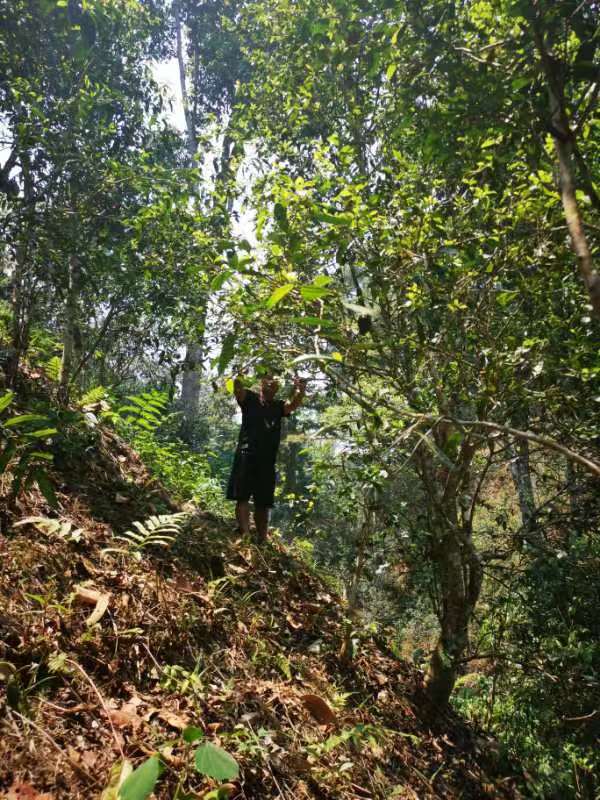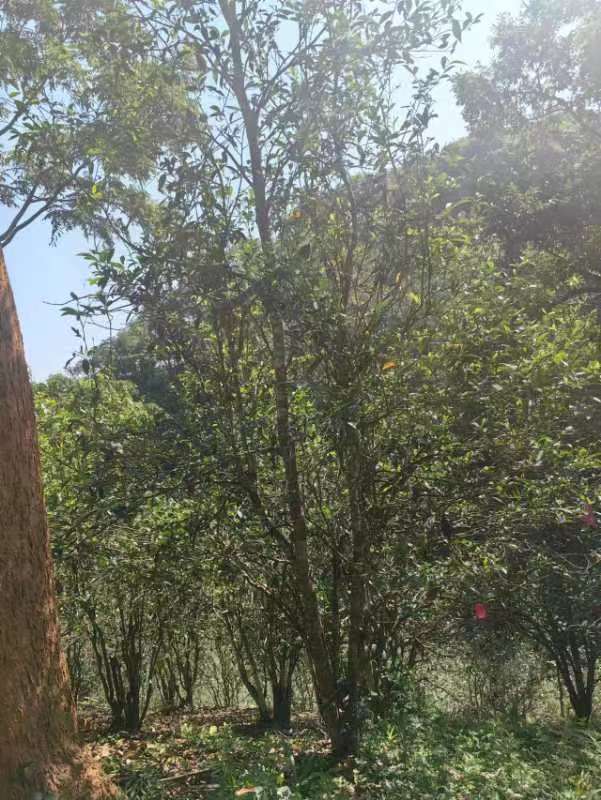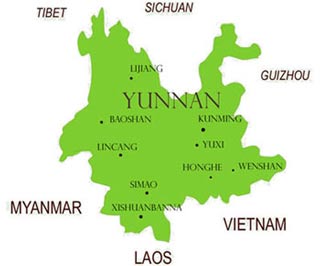
Before I go into the intricacies of evaluating gushu and what makes the material better than lesser aged trees let me start by passing some wisdom I received whilst sipping tea with the owner of ‘Gong Fu Tea House’ in Hong Kong back in 2014.

“Don’t listen to whatever people tell you, don’t judge the cake by the wrapper. Taste and feel for yourself.”
This concise slurp of knowledge is crucial in evaluating products that come from an area that ‘for the most part’ has very lenient compliance and regulation surrounding the production and labelling of its tea. Patience, a bit of time, experience and knowledge will bolster and puer drinker with the ability to recognise and evaluate the tea for themselves. We will help kick start this process for you here today.
Is My Gushu The Real Deal?

This fake 7542 can easily be recognised by the leaf grade used. The true version has a much smaller leaf grade. It’s all based on trust. Us vendors rely on our networks to sort the wheat from the chaff to then provide us with a selection of good, honest products of which we then make a further selection to provide to you. Trust is the Chinese way and it kinda works out, as long as your mixing in the right circles. There’s nothing stopping a tea brand presenting a standard terrace tea as being Lao Ban Zhang Gushu. I’ve been to Fangcun tea market and seen it! It happens. That being said I would also suggest that we in the West are in a ‘happy bubble’ generally regarding what’s on offer over here. There’s been the odd bad apple along side some supposedly 2000 year old material being sold and a sneaky fake Dayi cake slipping through the net but on the whole we’re kinda cushioned in that Puerh being sold here generally is what people say it is. However….
Not All Gushu Is Made Equal:

Multiple factors go into the evaluation of a Gushu. How has the garden been managed? How often is the leaf picked? Will the farmers pick in a bad year when the tree is weak? Is the tea a true representation of the area? What does the chi feel like? Taste, structure, region, production and Potentially storage all play a part. It’s tempting to buy a Gushu cake at £100 and think that it’s a bargain compared to an old tree (80 ish year old tree) cake at £120. In some respects it is a bargain! But the quality of the tea boils down to price at the end of the day. There’s a reason that the old tree cake is more expensive. Let’s dive in!
Tree management:

The farmer has many options when caring for his/her trees. Will they sacrifice a harvest for a better one next year? Or cash in now? We have seen some adverse weather conditions in Yunnan of late, not enough rain/ too much rain etc. These conditions take their toll on the teas and inevitably the yield/ quality of the tea. In such circumstances the farmer may decide to take a harvest anyway and get some money in the bank. Really the tree should be left alone to gain energy. The more it’s picked the less the tree has to give. I’ve offered 2 astounding wild teas that were picked for the very 1st time. 2017 Laos Gushu & 2017 Yiwu Wild. These teas were kicking out some seriously great characteristics, they were brimming with energy! With the 2nd years picking it was extremely noticeable that ‘Elvis had left the building’. The overt flavour and energy had dropped significantly. It was a shadow of the 1st picking. The more you pick the little green solar panels, the less ‘omph’ the tree has to give later. The use of fertilisers is I would say quite rare with Gushu, these trees kinda just get on fine without it and the use of agro chemicals on terrace tea is quite rare also. ‘Single tree’ is a more recent phenomenon that I’m not entirely comfortable with.
Region:

Some regions just don’t produce good tea compared to others, fact! Some of this evaluation is ground in peoples preference but a tea could be true Gushu but also be tepid in flavour, limp, generally quite boring and or low energy or maybe not good energy. The surrounding terroir and flora of the trees play a massive part in its character. For example Lao Ban Zhang varietal trees grown in Yiwu will taste very different. A side by side tasting of general Region, sub region, tea garden, part of tea garden and single tree within said part of tea garden will show more and more focused acute nuances of the area. Regions vary in price that are largely market driven. When tasting, decide which areas you find interesting then you can focus in on specific areas within. You can find teas within said region that doesn’t align with the general profile,
